Reflecting on 2021
For the last blog post of 2021, we wanted to reflect on some of the work that has taken place across the Society over the last year. Before we mention these achievements, we have some news about the Sir Richard Burton Medal for 2022.
The Sir Richard Burton Medal, 2022
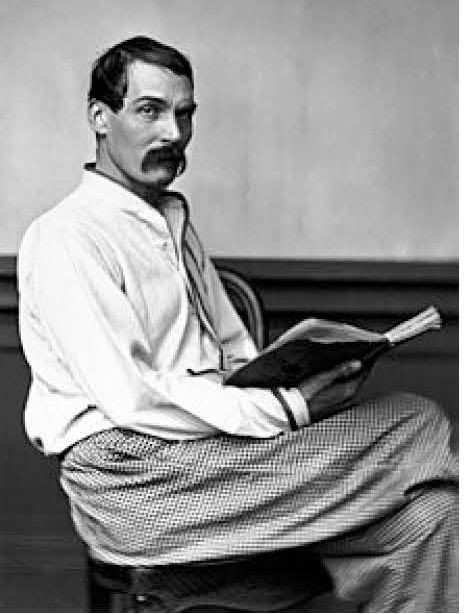
The following 3 nominees have been recommended by the Medal Committee, chaired by Professor Tony Stockwell, and will receive the Burton Medal in 2022.
Dr. Peter Alford Andrews and Mrs. Mügül Andrews nominated by Dr.Barbara Brend and supported by Professors Robert and Carole Hillenbrand and Dr.Yolande Crowe.
Peter Andrews with the constant assistance of his wife, Mügül, has taken the study of the Eurasian tent to a totally new level. The material culture of the Eurasian nomad is not as well researched as it should be, and in that culture the home of the nomad, the portable tent, is of central importance. Peter Andrews has devoted most of his life to clarifying its origins, its historical evolution and its endless varieties across Eurasia. He has endured severe physical and financial privation which would have destroyed a lesser man. He has spared no pains to “get it right”, making himself proficient in one language after another and going to the ends of the earth to study tents at first hand, often in the most difficult environments such as Kyrgyzstan, Mongolia and some of the worst deserts in the world. He has the heart and stomach of a true explorer and his publications will remain classics not just now but when the way of life that they document has suffered irreparable change and in some cases has totally vanished. (RH)
Professor Tim Williams nominated by Professor Susan Whitfield and supported by Professor Kazuya Yamauchi, Teikyo University, Japan, Dr. Dimitri Voyakin, Director of the International Institute of Silk Road Studies, Samarkand, Dr. Gai Jorayev, Institute of Archaeology, UCL, Professor Roland Lin Chih Hung, Sorbonne.
Professor of Silk Roads Archaeology, Tim is known in particular for his long-running exploration, archaeological and documentation projects in Beirut and Central Asia, for his collaborations with local partners on the Silk Road and for UNESCO and ICOMOS Silk Roads mapping. He has worked in circumstances and regions which are extremely challenging, both in terms of politics and the local conditions. He has always ensured that local institutions and people are involved and engaged in the work and that the results of his explorations and excavations are made widely available online and in print in local languages. (SW)
Pepita Seth nominated by Philippa Vaughan and supported by Dr. Navina Haidar, Metropolitan Museum New York, Dr. Richard Blurton, Professor Deborah Swallow, Dr. Rashmi Poddar, Jnanapravaha, Mumbai, Professor Anna Dellapiccolo, Dr. Pratapaditya Pal.
Over the past fifty years Pepita Seth has devoted her life to the exploration of the closed worlds of the Guruvayur Temple and Theyyam Rituals in Kerala. Her remarkable dedication and stamina in extraordinarily demanding circumstances, whether living with Theyyam community or photographing rituals of the Theyyam and of the Guruvayur Temple, alone would fulfil the criteria for receiving the Burton Medal. Her achievement is all the more remarkable that as a woman she has penetrated these patriarchal and secret worlds. In addition, however, she has meticulously recorded these hidden universes and through her accessible writing and brilliant photography opened them to a broader public – in India as well as internationally. (PV)
Previous recipients of the award include :
1925 H. St. John Philby (1885-1960)
1928 Sir Harold MacMichael (1882-1967)
1931 Bertram S. Thomas (1892-1950)
1934 Freya Stark (1893-1993)
1937 Sir Arnold Wilson (1884-1940)
1940 Major (later Sir) John Glubb (1897-1986)
1943 W.H. Ingrams (1897-1973)
1947 Colonel and Mrs D.L.R. Lorimer (1872-1962 and 1881-1949)
1952 Miss G. Caton Thompson (1888-1985)
1963 C.J. Edmonds (1889-1979)
1966 W. P. Thesiger (1910-2003)
1969 Brigadier S.H. Longrigg (1893-1979)
1973 Professor Mary Boyce (1920-2006)
1978 W.G. Archer (1907-1979) and H.T. Lambrick (1904-1982)
1981 Professor R.B. Serjeant (1915-1993)
1992 Mrs Doreen Ingrams (1906- 1997) and Miss Beatrice de Cardi (1914-2016)
1999 Simon Digby (1932-2010)
2004 Professor David Snellgrove (1920-2016)
2009 Ralph Pinder-Wilson (1919-2008, awarded posthumously)
2014 Professor Caroline Humphrey
Year Highlights:
Cataloguing achievements:
Several collections have been catalogued during the year and have been made accessible to readers on the Society’s Archives Hub page. This has included the personal papers of the Israeli Historian Abraham Poliak, several portfolios of topographical drawings by the West brothers during their time in the Maharashtra region of India and the papers of the former RAS President, Dennis Duncanson. Work has also continued in making accessible material from the Society’s institutional archive. Catalogues have been created which document past events and lectures that have taken place at the Society as well as illustrating how the Society’s collections have developed over the last 200 years.
We are also extremely grateful to Dr Philip Jagessar for his painstaking work surveying the RAS map collection. We now have much better information about our maps, and records are gradually being added to our online catalogue. We also have a new map chest, formerly belonging to late RAS Fellow Hugh Leach, which was generously donated by the Royal Society for Asian Affairs following the suggestion of Dr Rosie Llewellyn-Jones.
Over the past several months, we have been delighted to begin welcoming some of our long-serving volunteers back to the Society to resume their work with the collections. We look forward to continuing these projects in the new year, and to hearing about some of them in more detail at the next RAS Collections Evening (stay tuned for updates early next year!)
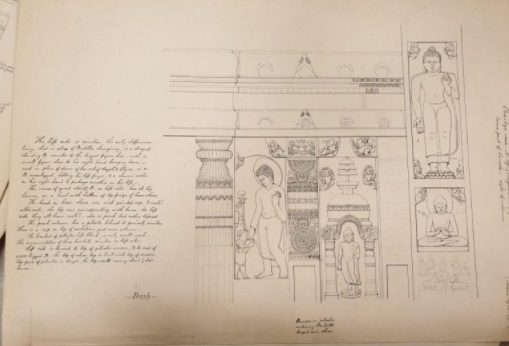
We would like to thank each of our volunteers for their hard-work over the last year, amidst such difficult circumstances.
Digital Library:
The digital library has continued to expand during 2021 with more items being added. This has included seventeen Malay manuscripts, a photographic album of Kalmyk people that was donated to the Society by Prince Roland Bonaparte, and Buddhist texts from Nepal which were collected by Brian Houghton Hodgson.
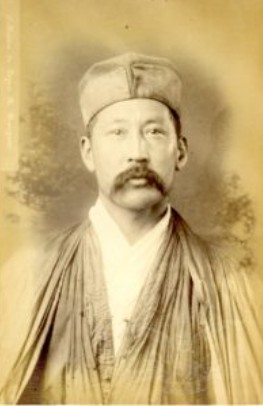
In a world where global travel continues to be severely disrupted by the pandemic, we are thrilled that many of these collections can be accessed remotely by readers across the world. We have more digitization work in the pipeline, and anticipate making more of our collections freely available online next year.
Engagement and Outreach:
At the start of the year, we held our annual Collections Evening over Zoom which included three presentations detailing work that had been carried out on the Society’s collections over the past year. With restrictions easing, we have also been happy to welcome back visitor groups to view some of the collections onsite. This has included Art and Archaeology students from SOAS, members of the Travellers Club and visitors from the Middle East Centre for Arab Studies.
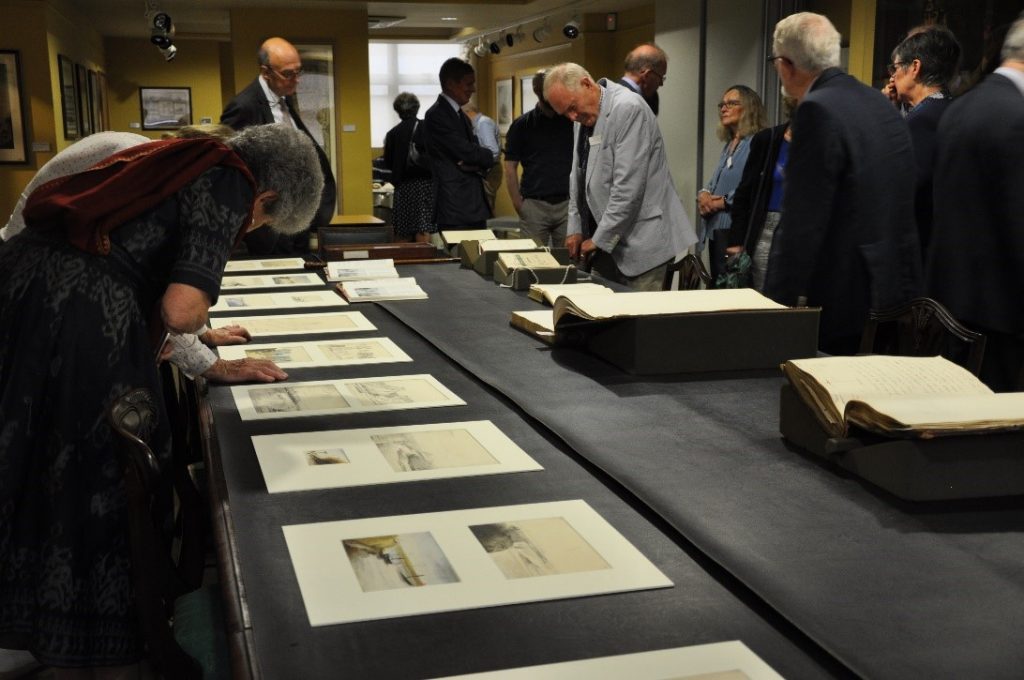
Items from the collections have also been loaned for exhibitions held both in the UK and worldwide. Exhibitions supported by the Society have included: Epic Iran held at the Victoria and Albert Museum, Opium, Silk and the Missionaries in China held in the Brunei Gallery at SOAS and the Moving to Mars exhibition which took place at The Swedish National Museum of Art and Technology, having originally been held at London’s Design Museum.
Lectures and Events:
This year has also seen the introduction of hybrid events at the Society where people have had the option to attend events either virtually or in-person. This has meant these events have been able to reach wider audiences with attendees from abroad being able to join. Our first hybrid event, a lecture by Professor Simon Kaner on ‘The rehabilitation of myth in the archaeology of ancient Japan and Korea’ was well received and we hope to continue with hybrid events in 2022. The setting up of the Society’s YouTube channel has also meant that people can catch up with events that they have might have not been able to attend.
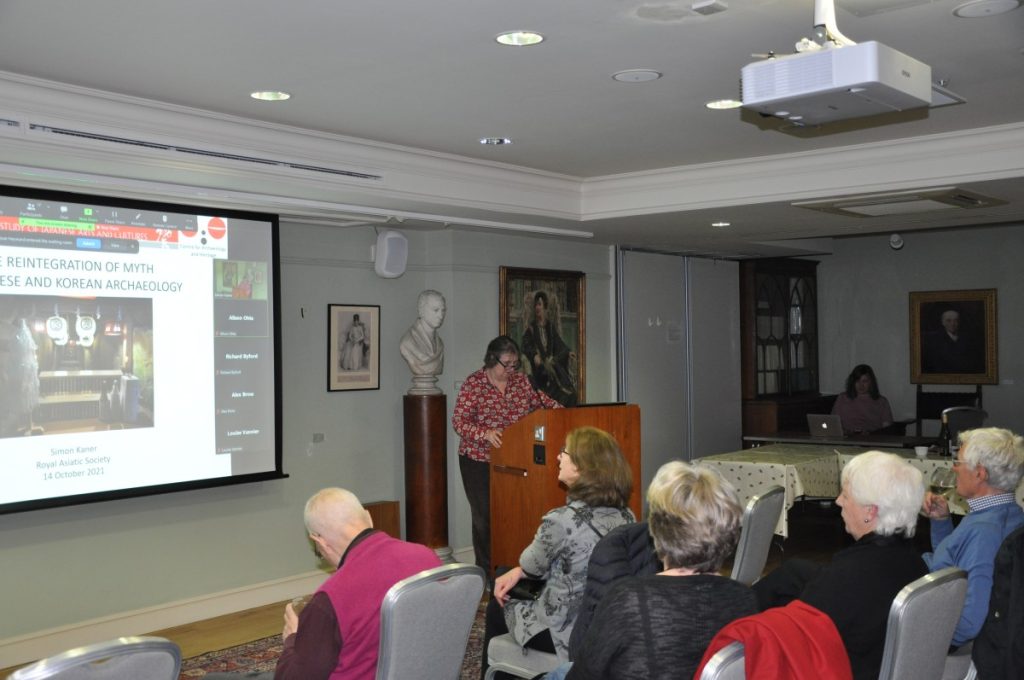
JRAS:
During the Summer, Professor Sarah Ansari stepped down as Honorary Editor of the journal having been appointed the first female President of the Society. Over the last 20 years as Honorary Editor, Professor Ansari has helped steer the course of the journal successfully and will work closely with the journal’s new Editor, Professor Daud Ali, to ensure a smooth transition.
This year saw the release of special edition of the journal, a Festschrift in honour of Francois de Blois who has served on the Society’s Council for many years, including as Vice President. Fellows can view this edition on Cambridge Core.
Awards and Prizes:
This years Bayly Prize was awarded to Dr. Mallika Leuzinger for her thesis on ‘Dwelling in Photography: Intimacy, Amateurism and the Camera in South Asia’. The easing of restrictions meant we were able to welcome all three Bayly prize finalists to the Society to give presentations on their research, which was followed by a reception.
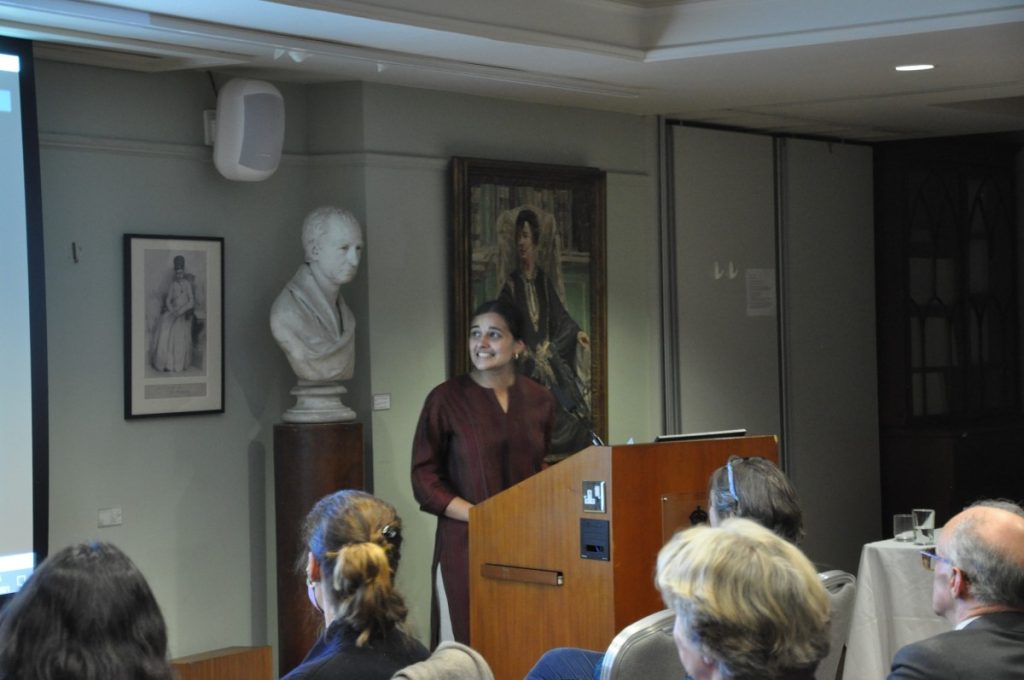
With this being my last blog before I leave the Society I would like to thank everyone who has followed and supported the blog over the past year. On behalf of the Society I would also like to wish you all a happy Christmas and New Year. Rest assured that the blog will be back next year where the new author will continue to share more news and reflections about the Society’s activities and collections.
